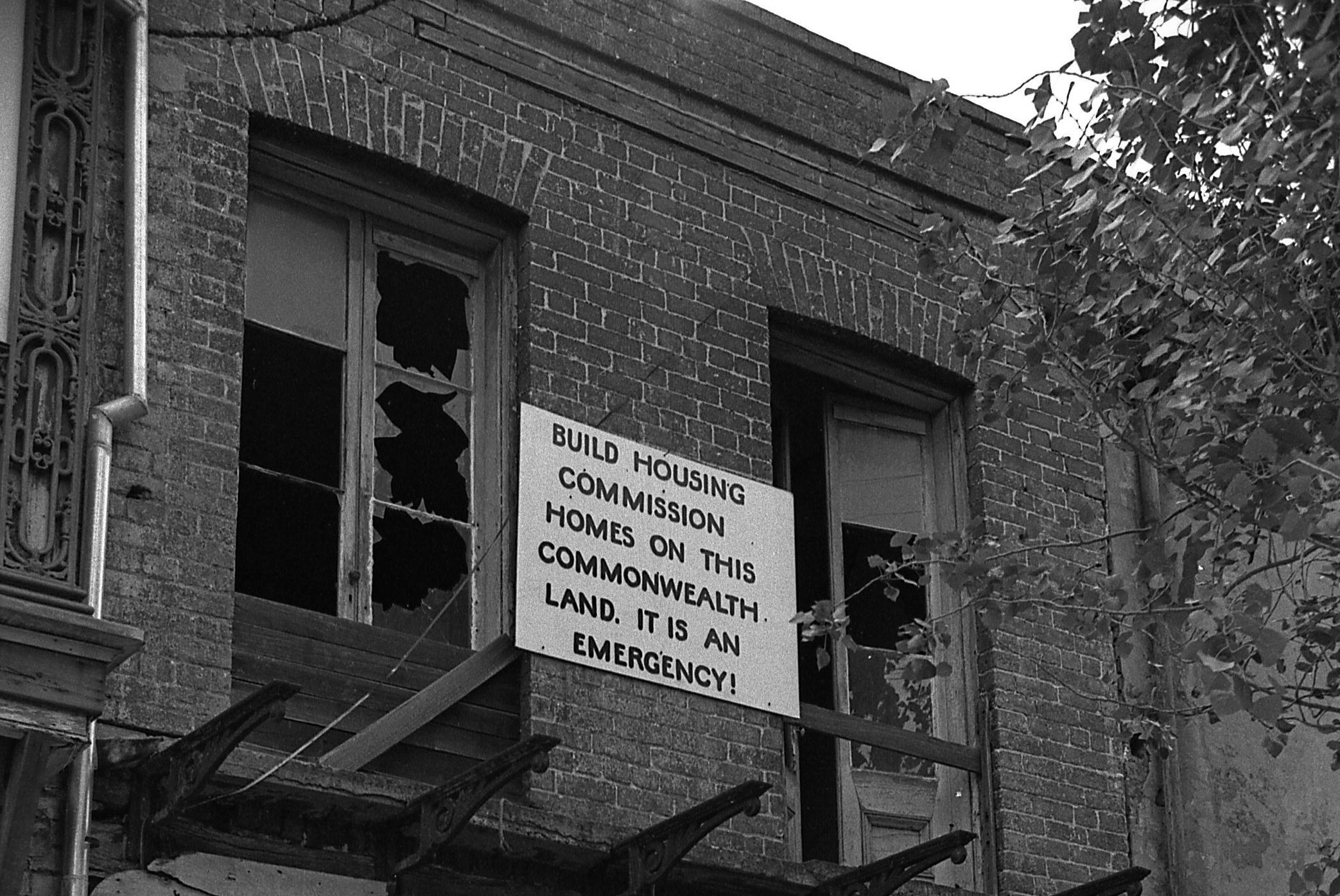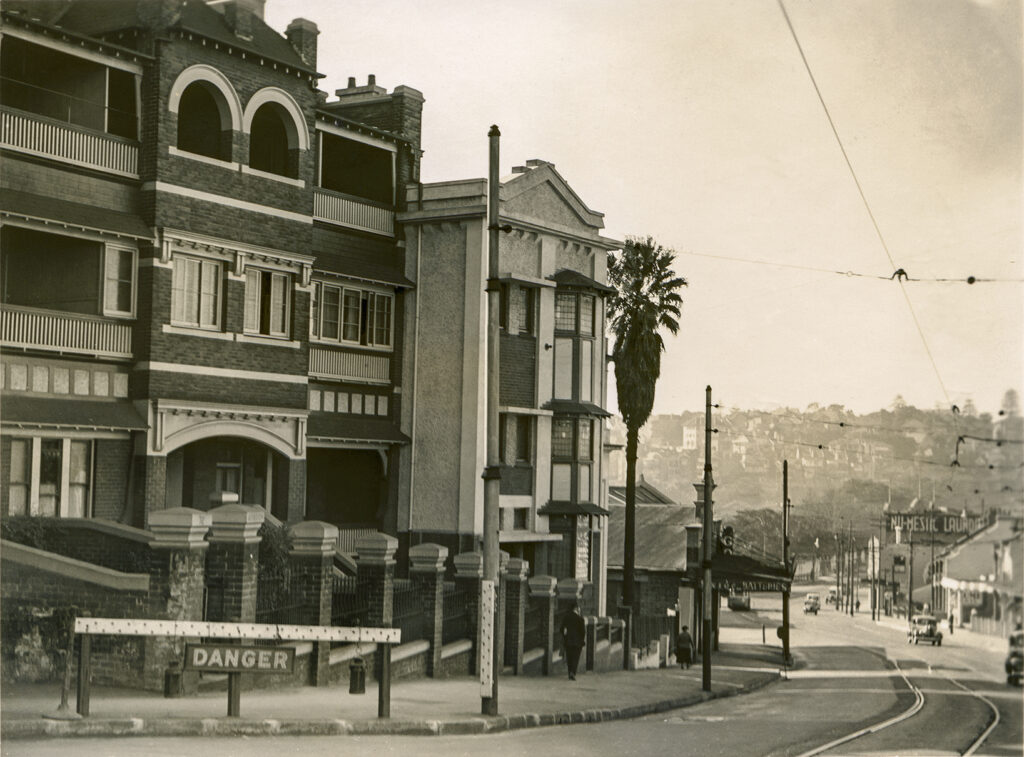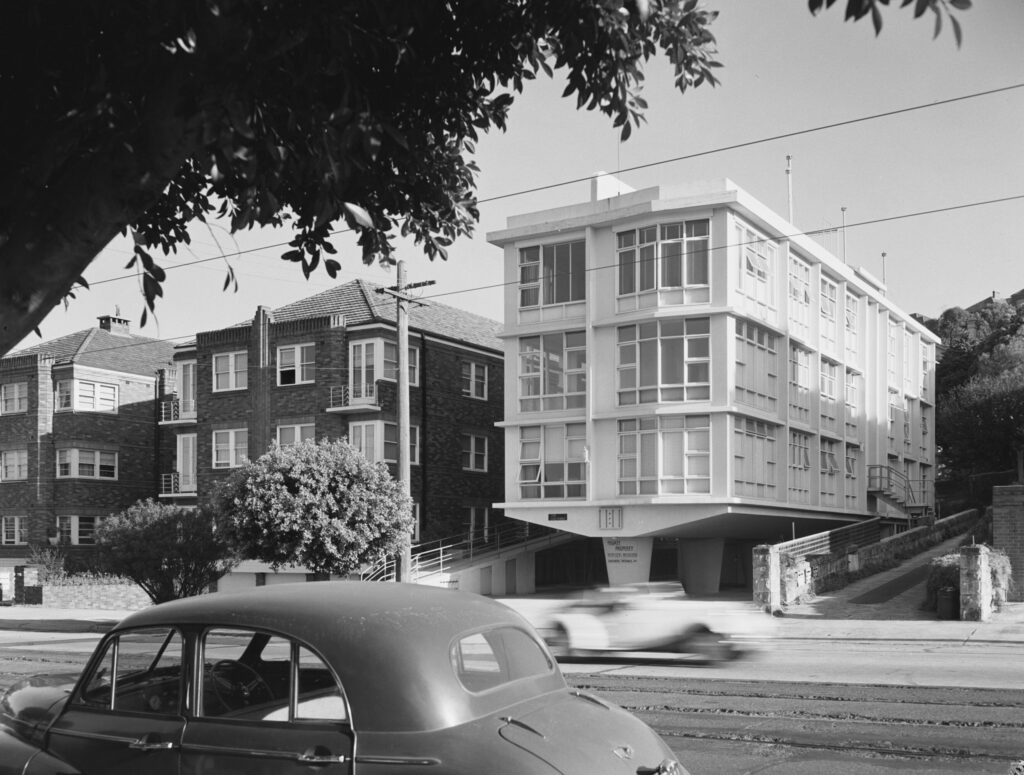
TODdling along─Planning unsteady steps towards housing
Image: Woolloomooloo Protests, 1970s. Source: City of Sydney Archives
GML CEO Sharon Veale reflects on the housing debate and how plans to tackle it could affect Sydney’s heritage.
Everyone understands that housing supply and affordability have reached a crisis point.
If listing heritage items and heritage conservation areas incites dispute, the NSW Government’s priority rezonings around metro stations and key transport hubs—the planning mechanism which is expected to unlock housing supply—has whipped up a frenzy.
Recently, the NSW Premier decreed a ‘war against the whingers’. Several lord mayors have taken to the streets, while slums, ghettos, and wrecking balls have all featured in the headlines.
The NSW Government has committed to the development of 377,000 new homes by 2029 as part of the National Housing Accord. Based on current and expected completions there is an estimated shortfall of around 170,000 homes.
The Transport Oriented Development (TOD) Program is poised to create sustainable and mixed-use development for current and future generations. The program includes two components.
Firstly, several priority high growth areas have been identified within 1200 metres of transport hubs. Each will be subject to accelerated rezoning. The priority areas include Bankstown, Bays West, Bella Vista, Crows Nest, Homebush, Hornsby, Kellyville and Macquarie Park. Together, over 15 years, they’ll be doing some heavy lifting on the housing front as 47,800 new homes are planned within walking distance to train stations (over 18,700 new homes in Bankstown alone). These state-led precinct rezonings are due for completion by November 2024.
Secondly, within 400 metres of 31 railway stations with surrounding infrastructure and amenity a new State Environmental Planning Policy (SEPP) will apply from April 2024 to streamline the delivery of 138,000 new dwellings over 15 years.
With all the hyperbole it is hard to know exactly what impact the rezonings and planning controls will have on existing and proposed heritage items and heritage conservation areas.
Publicly Premier Minns has said ‘heritage controls will apply to the extent that they are not inconsistent with the new standards’. While the Department of Planning, Housing and Infrastructure has, however, warned that ‘the changes proposed will result in significant change in these locations’.
Within the 400-metre areas the proposed planning controls will allow a maximum building height of 21 metres (or approximately 6 storeys) and a floor space ratio of 3:1 with no minimum lot size or width. This means we will see taller buildings adjacent to heritage items and within heritage conservation areas.
Meanwhile, an NSW Government pattern book of endorsed building designs will provide applicants with access to fast-tracked approvals.
It is unclear what role local communities and councils will play in this process, but development applications are expected to be lodged by mid-year. Developers are already letterboxing residents in heritage conservation areas across the various identified areas. Public submissions to the Upper House inquiry into the TOD program are open until 28 March 2024. Heritage concerns are included in the committee’s Terms of Reference. The committee’s final report is due in late September.

Finding a flat, Kings Cross, March 1940. Source: Mitchell Library, State Library of New South Wales and courtesy ACP Magazines Ltd.


